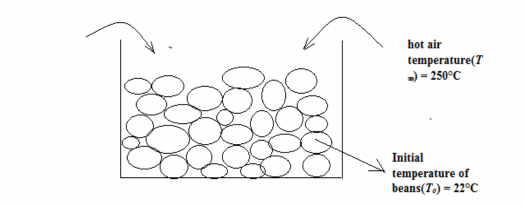A 5.0-kg mass with an initial velocity of 4.0 m/s, east collides with a 4.0-kg mass with an initial velocity of 3.0 m/s, west. After the collision the 5.0-kg mass has a velocity of 1.2 m/s, south. What is the magnitude of the velocity of the 4.0-kg mass after the collision?
a. 2.0 m/s
b. 1.5 m/s
c. 1.0 m/s
d. 2.5 m/s
e. 3.0 m/s
d
You might also like to view...
A rod is 2.40 m long and has a diameter of 2.50 mm. A force of 2000 N is applied to the end to stretch the rod by 1.00 mm. What is the tensile modulus for this rod?
a. 
b. 
c. 
d. 
e. 
The maximum theoretical thermodynamic efficiency of a heat engine operating between hot and cold reservoirs is a function of which of the following?
a. hot reservoir temperature only b. cold reservoir temperature only c. both hot and cold reservoir temperatures d. None of the above choices are valid.
Which of the following statements is TRUE?
A. Saturn has small- and medium-sized moons, but no large ones. B. Jupiter's solid surface lies just below the cloud layers visible from Earth. C. Neither Uranus or Neptune have ring systems. D. The Great Red Spot is an anti-cyclone on Jupiter E. There is no evidence to suggest that either Jupiter or Saturn has a rocky core.
Green coffee beans, after harvesting, are dried and roasted in a fluidized-bed roaster. This type of roaster has hot air typically at 2500C, and the air blows through a screen or perforated plate above which the beans float in an agitated suspension (fluidization) in the hot air as they get heated. As the beans heat up, they get dried and roasted to the required condition. They are typically flat ellipsoids that have an average volume of 44 mm3 and an average surface area of 66 mm2. For a flavorful and aromatic medium roast, the beans have to be heated to 2000C. If the beans are initially at 220C at the time they enter the roaster and the convective heat transfer coefficient of the heating air is 20 W/(m2 K), determine the required roasting time. Coffee bean thermophysical properties are
k=0.184 W/(m K), c=2.564 kJ/(kg K) and ?=552 kg/m3
GIVEN
• Green coffee beans with average volume V=44 mm3 and average surface area As=66 mm2
• Initial temperature of beans(To) = 22°C
• Roaster hot air temperature(T?) = 250°C
• Heat transfer coefficient ( ch ) = 20 W/(m2 K)
• Length of the oven(L)=3.5 m
FIND
• The heating time required for beans to reach to 200°C
ASSUMPTIONS
• Constant thermal conductivity
• End effects are negligible
SKETCH

PROPERTIES AND CONSTANTS
Given For beans Thermal conductivity (k) = 0.184 W/(m K)
Density (?) = 552 kg/m3 Specific heat (c) = 2.564 kJ/kg=2564 J/kg